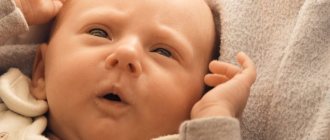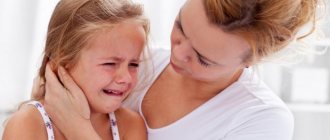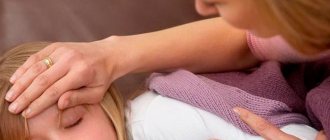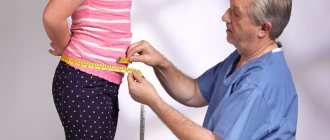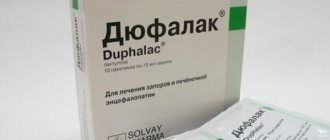An infectious inflammatory process inside the ear is called otitis. This is the most common disease in children under three years of age, which is explained by the special anatomical structure of the ear: the Eustachian tube in children is narrow, short and in relation to the nasopharynx, located at a large angle.
Considering that the disease is caused by various microorganisms, it is treated using antibacterial drugs. It is necessary to use antibiotics for otitis in children, despite their detrimental effect on the internal microflora of the body.
Otitis requires competent and attentive treatment. Constant supervision by an otolaryngologist is necessary to prevent the infection from spreading and affecting the brain. Any respiratory disease or inflammation in the nasopharynx can cause a complication in the form of otitis media, through the penetration of bacteria and viruses into the ear canal. The child’s immunity is not fully formed and the body is not always able to fight off infections. And the consequences of the disease in children can have a severe outcome, even death.
How to use
To administer medication into the ear canal, you need to do the following:
- Prepare. For free penetration of the drug inside, it is necessary to clean the outside of the ear from wax using hydrogen peroxide or another rinsing agent, and dry the ear cavity.
- Heat. Before use, warm the drug in warm water or your hand.
- Enter. The drug must be infused into the child directly on the side, with the affected ear up, a few drops, evenly, without creating a plug, in order to allow the medicine to be distributed along the ear canal. After which the child needs to lie in this position for several minutes.
If the eardrum is damaged, administering the medicine into the damaged ear canal is prohibited. The drug is administered only using a cotton swab.
When are antibiotics needed?
In fact, antibiotic therapy for this disease causes a lot of controversy. Some argue that otitis media can be cured without the use of antibiotics, while others are convinced of the opposite. But, most experts are inclined to believe that antibacterial agents are simply necessary to destroy germs and bacteria that cause inflammation in the ear.
To date, most doctors have agreed with the fact that until the perforation of the eardrum and the removal of pathogenic exudate have occurred, taking antibiotics can be delayed. However, if the prescribed therapy does not show the desired result, and the pain remains at the same level, you should immediately take antibiotics prescribed by a specialist.
When is an appointment necessary:
- For otitis media in newborns and children under 2 years of age;
- In the case when the mark on the thermometer exceeds 39 degrees and remains for 2 days;
- If during otoscopy the otolaryngologist discovered purulent masses in the ear cavity;
- When did general intoxication of the body begin?
In most cases, the inflammatory process is formed as a result of the harmful effects of bacteria such as staphylococcus and Haemophilus influenzae. Penicillin antibiotics are an excellent start to treatment. Already on the second day, the doctor noted significant improvements.
But when treating catarrhal otitis, the doctor most often prescribes antibiotics from the family of macrolides and cephalosporins. This group has a more powerful effect on most bacteria.
In what cases should you not take these medications:
- In the case of a mild form of otitis in children over 2 years of age. Initially, the specialist will begin treatment with more alternative medications - vasoconstrictor drops, painkillers (Nurofen, Panadol), a warm compress on the ear in the absence of elevated body temperature. In two days, the doctor will conduct another examination and understand how to proceed. If the baby’s body does not cope well with the inflammatory process, the doctor will think about prescribing antibiotics;
- If otitis media appears against the background of a viral disease such as influenza, since medications from this group are not effective against viruses;
- If the child does not have symptoms such as high body temperature, headache and ear pain, or general intoxication of the body. In this case, the body has every chance to overcome the infection on its own.
Are antibiotics needed?
It should be noted that only 10-11% of children with otitis media require antibacterial therapy. This mainly applies to cases of purulent otitis media. If you notice symptoms of otitis media, do not decide on treatment yourself; take your child to the doctor. If, upon examination, the doctor does not find signs of the presence of a virus in the body (runny nose, high temperature, dry cough, etc.), then he may assume otitis media of bacterial etiology in the child. And then the question of taking antibiotic drugs will definitely arise.
In the next video, Dr. Komarovsky will tell you when it is necessary to use antibiotics to treat otitis media.
Principles of treatment
The main thing to remember when a child develops otitis media is that it is impossible to get rid of the disease in one day. It is necessary to complete a full course of antibiotic treatment and follow other recommendations to speed up the recovery process.
For recovery it is necessary to complete the full course of treatment
For the antibiotic to work, you need to create favorable conditions for the child to recover. Mandatory is:
- ensuring free nasal breathing in the child (using drops for a runny nose or a suction bulb);
- wearing a scarf or cap by the child (depending on the age of the baby) so that the ears are always warm;
- refusal of water procedures (they can be replaced with wiping);
- refusal to walk if there is an elevated body temperature or severe pain.
It is also important that the recovery process is supervised by a doctor. This is especially important if otitis media develops in a child under one year old, because many antibiotics are prohibited for children of this age
It is important that the treatment process is supervised by a doctor
Pediatric otitis - characteristic features
Children's otitis is an inflammatory process of an acute or chronic nature that affects one of the parts of the hearing organ. Depending on the location of inflammation, the following types of otitis media are distinguished:
- Interior.
- Average.
- Outer.
Children's otitis media excludes any attempts at self-medication.
In addition, the inflammatory process, according to the nature of its spread, is divided into unilateral and bilateral.
The second type of illness is much less common.
Inflammation of the middle ear is characterized by several stages:
Stage 1 - inflammation of the Eustachian tube occurs (tubo-otitis), as a result of which it does not perform the function of equalizing pressure. After the inflammation reaches the middle part of the ear cavity, the production of fluid - exudate - begins;
- Stage 2 – purulent otitis media, in which infections occur and pus accumulates in the middle ear cavity. When a large amount of purulent masses accumulates, they begin to put pressure on the membrane of the eardrum, as a result of which it perforates and the pus comes out;
- Stage 3 – the process of restoration of the eardrum membrane occurs, as well as the normalization of the auditory analyzer.
As for the factors that provoke the occurrence of otitis media in children, these include:
- Anatomical features of the Eustachian tube - up to a certain age, the auditory tube in a baby is much shorter and wider, and also does not have the characteristic slight curvature, as in adults. This phenomenon causes the unhindered penetration of pathogenic organisms into the ear.
- Frequent acute respiratory infections, acute respiratory viral infections, leading to complications in the form of otitis media.
- Pathologies of the nasopharynx of a chronic form, forming a constant source of infection in the immediate vicinity of the middle part of the hearing organ.
Features of the structure of the Eustachian tube in children
Having briefly familiarized ourselves with the features of the development of ear inflammation in childhood, let's move on to the question of the need to use an antibiotic for children with otitis media.
How to determine otitis media in a child
Unfortunately, the baby does not always have the opportunity to explain what hurts him, especially in infancy. Parents must be extremely attentive so as not to miss the moment the first symptoms appear. The sooner treatment is started, the easier it will be to endure and recovery will not be long in coming.
An increase in body temperature is not the first sign of illness. The baby may become lethargic and restless, rub the sore ear, and avoid lying on the side from which the inflammation developed. Complaints of headache and hearing loss appear. The child often refuses to eat because the pain in the ear gets worse when chewing. Redness of the ear, peeling, formation of lumps on it, liquid discharge - all this should not only alert the parent, but prompt him to urgently take his child to the doctor. Only after a thorough examination will a specialist make a final verdict and prescribe antibacterial therapy .
Ear inflammation can have different locations and shapes. But, regardless of the variety, an antibiotic for otitis media is almost always prescribed. Before the examination, it is strictly forbidden to instill medicinal or anesthetic drugs into the ears, or use folk remedies or heat. Excess fluid in the ear will only cause harm. If the integrity of the eardrum is damaged, the product will penetrate into the cavity of the middle ear, which will lead to inflammation of the auditory nerve or auditory ossicles.
The most effective drugs
It is difficult to choose the best antibiotic for otitis media in children; their effectiveness depends on the individual characteristics of the patient. Such medicines differ according to the method of application and the main component.
For oral administration
The list of the best antibiotics for children for otitis media is quite extensive. The ones most often used are those that are better tolerated and act faster.
- The most common children's antibiotic for otitis media is Amoxicillin. It belongs to the group of penicillins. It is well tolerated and can be used even for newborns. It comes in different forms, so you can choose the right option for each baby.
- Augmentin is amoxicillin with clavulanic acid, which increases its effectiveness. It is prescribed from the age of three months, it is easy to calculate the required dosage. Quickly relieves pain and inflammation.
- Klacid is a macrolide. This antibiotic is often used for sore throat and otitis in a child. It is non-toxic and effective against any form of disease. There are tablets and suspensions. The dose is calculated based on the child's weight.
- Flemoxin Solutab is a semi-synthetic penicillin based on amoxicillin. Quickly relieves unpleasant symptoms. The tablets have a pleasant taste and dissolve in water, so they can be given even to infants.
- Clarithromycin is effective even for severe inflammation. It is a macrolide derivative of erythromycin. Available in tablets, prescribed from 6 years of age.
- Sumamed is an antibiotic from the macrolide group. Can be used from 6 months. Available in tablets, ampoules and suspensions.
- Suprax is a third generation cephalosporin. Allowed for use from birth. There are suspensions and capsules, the drug is well tolerated.
- Omnicef is a drug from the group of cephalosporins. Prescribed for babies from 6 months.
Local remedies
Treatment with antibiotics for otitis in a child does not always involve the use of drugs orally. Often it is enough to use local remedies: drops and ointments.
- Anauran is a complex drug. Quickly relieves unpleasant symptoms. Prescribed for the treatment of various forms of otitis in children over one year of age.
- Otofa are drops that help with any form of illness. It can be used even with a damaged eardrum.
- Candibiotic is prescribed after 6 years. Quickly relieves inflammation and relieves pain.
- Sofradex is usually used only from 4 years of age, as it contains a hormone.
- An alcohol solution of chloramphenicol is effective for the purulent form of the disease. You can drip into the ear or use cotton pads soaked in the solution.
- Dioxidin drops are prescribed after 7 years, when other medications have not been effective.
- Levomekol ointment is placed in the ear. It reduces pain.
Injections
In severe cases and with purulent otitis, antibiotics in children are used in injection form. The following drugs are often prescribed:
- Ceftriaxone is one of the safest drugs, used from birth, and acts quickly;
- Cefuroxime is also well tolerated and is used from birth;
- Cefipime has many side effects and is used in hospitals when other drugs have been ineffective;
- for serious complications, Cefazolin is used, prescribed from 1 month.
Only a specialist can decide which antibiotic is best for otitis media in children. You need to follow his recommendations, then you will be able to avoid complications.
Amoxicillin for acute otitis media
Amoxicillin is an antibiotic used to treat bacterial ear infections as well as other inflammatory conditions.
Amoxicillin is also used for sinusitis. Amoxicillin acts against all bacteria that cause acute otitis media.
It is effective even in the treatment of otitis media caused by highly resistant bacteria.
Children of toddler and kindergarten age and people with severe illness take amoxicillin from a week to 10 days, children from 6 years old - from 5 days to a week.
Dosage of amoxicillin for adults and children for otitis media:
- For children over ten years of age , the usual dose of amoxicillin (for mild to moderate symptoms of otitis media) is 500 mg three times a day. For severe infection, the dosage may be increased to 1000 mg three times daily.
- Children weighing 40 kg or more should follow the recommended dosage for adults.
- For children under 2 years of age, amoxicillin is given in the form of a suspension at the rate of 20 mg per kg of weight, in three doses.
- Children over 2 and under 5 years : 125 mg daily.
- Children over 5 and under 10 years : 250 mg three times a day.
- Adults : For mild to moderate infections, the standard dose of amoxicillin for otitis media is 500 mg every half day or 250 mg every 8 hours.
- For serious infections : 875 mg every half day or 500 mg every 8 hours.
Children whose ear infection is accompanied by fever and vomiting most likely need immediate treatment with antibiotics. Children who do not have a fever and vomiting are unlikely to have complications from ear infections and most likely do not need antibiotic treatment.
There are situations when antibiotics can be prescribed promptly:
- The child complains of moderate to severe ear pain.
- The child has a fever (over 38°C).
- The child drinks little fluid (dehydrated).
- The child has been diagnosed with serious chronic illnesses, such as heart disease or cystic fibrosis. They increase the risk of complications from an ear infection.
- The child is not yet 2 years old.
- The child's condition worsened or did not improve within 48-72 hours after the first symptoms of acute catarrhal otitis appeared.
However, the decision to prescribe amoxicillin or another antibiotic to treat ear inflammation should only be made by a doctor.
Amoxicillin does not work for otitis in adults and children - what to do?
Some types of bacteria have developed resistance to amoxicillin over time.
Critics of the heavy use of antibiotics in the United States point out that millions of amoxicillin prescriptions for ear infections in adults and children have helped create these resistant strains of bacteria.
Indications for use of another drug with an antibiotic include (but are not limited to):
- Lack of improvement in the initial stage of treatment of acute otitis media with amoxicillin.
- Hypersensitivity - allergy to penicillin.
- An illness accompanying otitis that requires other treatment, for example, when otitis coincides with purulent conjunctivitis.
- Treatment with amoxicillin within the last 30 days.
If initial treatment with amoxicillin for otitis media in adults and children fails, your doctor may write a prescription for a medicine containing high dose amoxicillin and clavulanate as the preferred choice of second-line treatment.
The combination of clavulanate and amoxicillin provides the drug with additional effectiveness against microorganisms that produce beta-lactamase.
Amoxicillin (Flemoxin) and clavulanate often cause gastrointestinal problems such as diarrhea. This may be a problem for people with weakened bodies.
gajmorit.com>
List of antibiotics
There are many antibiotics, and new drugs are constantly being developed. This is due to the ability of bacteria to mutate, they adapt to the active ingredients of drugs. It is an endless struggle between microorganisms and pharmaceuticals.
Drugs are divided into groups according to their composition - the active substance. There are several generations of antibiotics depending on the time of their development.
List of the most common medicines:
- Amoxicillin is one of the most prescribed penicillin drugs. It is well tolerated by children of any age and can be given from birth. For convenience, there are several forms of release: suspensions for children, tablets and capsules for older patients.
- "Augmentin" is a drug from the penicillin subgroup. It is based on the same amoxicillin, enhanced with clavulanic acid. This improves the absorption of the antibiotic, which leads to its high effectiveness in the treatment of ENT diseases. The drug is presented in suspension, tablet and injection forms. Can be used from birth. "Augmentin" enjoys well-deserved popularity among pediatricians and is well tolerated by patients.
- Unidox Solutab is an antibiotic from the tetracycline group. Available in the form of soluble tablets. Application has an age limit - over eight years. Tetracyclines are good for ear diseases, but are used less frequently than penicillins, as they have more side effects.
- Clarithromycin is a semisynthetic drug of the macrolide family. It has proven itself in the treatment of otitis media of varying severity. The disadvantage of the drug is that it is available only in capsules (for patients over 12 years old) and tablets (used by children over 6 years old).
- Azithromycin is another representative of macrolides, often prescribed for acute or chronic inflammation of the middle ear. It is also available only in the form of tablets and capsules and is used from the age of 12.
- "Klacid" is a popular macrolide. It can be prescribed to even the smallest patients due to the variety of dosage forms and good tolerability. Pharmacies offer suspensions, tablets and injections.
- "Sumamed" is one of the most frequently prescribed drugs from the group of macrolides - azalides. It comes in the form of a suspension, tablets or ampoules. Children from six months of age can drink it.
- "Cefazolin" is a first-generation cephalosporin drug. It is available only in the form of powder for injection; it can be used even by infants from one month old. Like most injectable drugs, it is prescribed for severe and complicated forms of otitis, mainly in a hospital setting.
- Cefuroxime axetil is a higher, second generation cephalosporin. The high effectiveness of drugs of this group in the treatment of ENT diseases has been proven. Use in injections is possible from birth, and starting from 5 years in tablet form.
- "Suprax" is a third generation cephalosporin drug. Well tolerated and helps with otitis media. Suprax suspension and capsules are produced. The drug can be prescribed from birth. The manufacturer recommends careful monitoring by a physician when used in children under 6 months of age.
- "Ceftriaxone" is another antibiotic injection drug from cephalosporins, it belongs to the third generation. Gives quick, lasting results and is used to treat children from birth. Recommended for use in complex otitis media with purulent processes.
- "Omnitsef" is a drug from the same group (cephalosporin), belongs to the third generation. The medicine helps well with any form of the disease. They produce tablets and powders for injection. Injections are prescribed from 6 months.
- "Cefepime" is a modern cephalosporin drug, belongs to the fourth generation. It is prescribed in the most severe cases, when other medications have proven ineffective. Application is possible only in the form of injections. The drug has a very strong effect and has many side reactions. Injections are performed only in a hospital setting, as continuous monitoring of the patient is required.
Antibacterial therapy
Most doctors do not recommend rushing to use antibiotics to treat otitis media in children. The disease of mild to moderate severity is cured within a few days on its own or with the use of anti-inflammatory drugs. If no improvement is observed after 3-4 days, proceed to antibiotic therapy. At temperatures above 38 degrees, antipyretic and painkillers are used.
This “waiting” tactic is suitable for aunts over two years old. If otitis media occurs in a child under two years of age, special antibiotics for children are definitely used for treatment. The drugs are prescribed to avoid intoxication of the body, hearing loss and the spread of infection to the brain.
When treating with antibiotics, therapy begins with drugs of the penicillin group, since they are more easily tolerated by the child’s body and have fewer side effects than other drugs. The most common among them is Amoxicillin (Flemoxin Solutab). It has a wide but gentle spectrum of action and is able to cope with even severe forms of infection. Amixillin does not destroy intestinal microflora and is a safe antibiotic. It is produced in the form of capsules, tablets, suspensions. The dosage is calculated taking into account the weight and age of the child . If its effect is insufficient, a stronger medicine containing Amoxiclav is prescribed. This drug is even used in the treatment of newborns.
For the treatment of otitis media, purulent otitis media, and for prolonged treatment, Ampicillin, Azithromycin, Nystatin or Sultamicillin are prescribed, but their use is impossible in case of individual intolerance to penicillin.
Antibiotics of the cephalosporin class are widely used. They are contained in the drugs Cefazolin, Cefipime. If an allergic reaction to these medications occurs, Levofloxacin, Clarithromycin and others are prescribed. The latter has proven itself to be an effective and safe drug. By suppressing protein synthesis in the microbial cell, it prevents the proliferation of microorganisms. Available in the form of suspension and tablets.
The drug Ceftriaxone is often used to treat newborns and infants. It has a broad bactericidal effect, but is used for inpatient treatment under medical supervision, as it has a chemotherapeutic effect and can cause side effects.
A drug with antiallergic and anti-inflammatory effects is Sofradex. It is prescribed for the treatment of acute and chronic otitis media, accompanied by itching, irritation, and swelling. Available in the form of drops.
Another effective antibacterial agent in the fight against ear inflammation is Sumamed. It is approved for the treatment of children over six months of age. To prevent the child from refusing to take it, the drug was created with a fruity taste and aroma.
To relieve swelling of the nasopharynx, antihistamines are additionally prescribed.
Indications for use
- In cases where otitis media is diagnosed in a newborn and a child under 2 years of age.
- If the baby’s body temperature rises above 39 degrees and lasts for more than 2 days.
- When a visual examination confirms the presence of pus in the ear.
- If the baby shows visible signs of severe intoxication.
The most common “culprits” of otitis in childhood are staphylococcus and hemophilus influenzae, known to everyone from the school biology course. Antibiotics of the penicillin family, as recent medical studies have shown, are, alas, ineffective against pests that cause ear inflammation. However, they can cure mild forms of the disease. In addition, relatively “soft” and “delicate” penicillin drugs will be an excellent start in therapy. If there is no relief after a couple of days, the pediatrician or ENT doctor will change the antibiotic to another.
To treat the acute form of the disease and catarrhal otitis, cephalosporin-type antibiotics and macrolides are usually used. They are more powerful; most bacteria have nothing to oppose them. However, the list of side effects and contraindications for such drugs is much wider.
conclusions
In ancient times, a large number of the population died as soon as they caught a fever or got blood poisoning. Because drugs that can resist harmful microorganisms appeared only in the middle of the last century. It all started with simple penicillin, but pathogens very quickly adapted and learned to survive after it. Over the past few years, the pharmaceutical industry has made great strides. New forms of antibiotics have appeared on the drug market: macrolides, cephalosporins and others. They have different periods of action and different dosages, which in each individual case must be determined by the doctor, based on the age and condition of the patient. Self-medication with antibiotics is unacceptable, since many of them have a long list of side effects.
Medicines for pharyngitis in adults are described in this article. And here you will learn about the effectiveness of using cyclamen in the treatment of sinusitis.
Recommendations for taking antibiotics in children
Only those drugs prescribed by the doctor are allowed for use. It is strictly forbidden to prescribe an antibiotic for yourself or your child, since the medication is prescribed on the basis of tests and research.
Let's look at a few tips to keep in mind:
- The dosage must be strictly observed.
- Do not stop using it before the specified period, even if the condition has significantly improved.
- It is recommended to drink only clean water.
- If side effects occur, you should immediately inform your doctor.
Once again, we draw your attention to the fact that only the attending physician prescribes the necessary medication. It is worth noting that in some cases otitis media can become seriously complicated
Most often, this happens when parents are skeptical about antibacterial therapy, losing precious time for adequate treatment. You should not experiment on the health of children, trusting what a friend or neighbor advised. Each of us has an individual body, and only a specialist can choose the optimal treatment regimen for your child.
The role of antibiotics in the treatment of otitis media
Therapy with a course of antibiotics for otitis media is very important, especially when it comes to inflammatory processes. At the same time, the opinion of many experts is still the following: from the moment of spontaneous perforation in the ear membrane, as well as the release of exudative fluid to the outside, there is no need to use antibiotics. The acute stage of otitis without complications is observed in the patient for 5 days. In turn, antimicrobial therapy is prescribed when symptomatic treatment does not bring the patient the desired improvement: there is no reduction in pain in the auricle, hearing acuity deteriorates, and signs of general intoxication of the whole body are observed.
Complications of otitis media include the appearance of purulent discharge, which the doctor must take for analysis in order to choose the right antibiotic for the patient based on the state of the microflora. In the absence of the opportunity to take exudate, the patient is prescribed puncture samples of intra-ear contents. But most often, specialists make do with broad-spectrum antimicrobial drugs in the prescription.
Prescribing antibiotics in children may also be motivated by the doctor’s desire to prevent complications of the disease, this applies to patients with low immune defense.
Purulent otitis in a child: treatment with antibiotics
Purulent otitis is accompanied by a rupture of the inner membrane of the ear and purulent discharge from it, which comes out.
For purulent otitis media, doctors primarily prescribe rinsing with antimicrobial agents. These drugs are not capable of producing ototoxic effects that could impair hearing function. In this procedure, a combined solution of antibiotics is injected into the child's ear cavity. Such procedures cannot be carried out independently at home, but only in a hospital and under the supervision of an otolaryngologist.
There are no particular differences in therapeutic methods of treatment for purulent otitis, as with standard inflammatory processes. As a rule, antibacterial therapy is prescribed in the form of complex drugs. If a patient is diagnosed with complications during the course of the disease, then doctors resort to non-steroidal anti-inflammatory drugs in the form of diclofenac, olfen. Ampicillin remains the first drug on the list for use, but its place is gradually being taken by the popular amoxicillin.
In this video, a famous pediatrician will talk about the rehabilitation of children after taking antibiotics: how to help the intestines establish intestinal microflora after treatment.
Otitis: treatment and antibiotics in children: what drugs are prescribed?
The most common drugs for AOM include amoxicillin. It is preferred by doctors for its excellent antimicrobial and antiseptic effects. The drug can be prescribed only in cases where the patient has not experienced an allergic reaction when taking semi-synthetic penicillin. Its use is permitted for any course of otitis media and at different stages of inflammation in the area of the auricle.
Another widely known drug called Aminoglycoside netilmicin is prescribed for otitis media in the form of injections. The maximum dose of the drug is designed for a course of 14 consecutive days. The medicine has good therapeutic performance and virtually no side effects.
Only a doctor can individually prescribe the correct drug, taking into account all the patient’s tests, including the microflora of the discharge. However, there are situations when it is impossible to test the susceptibility of the patient’s microflora to the action of certain antimicrobial drugs. In such cases, specialists resort to broad-spectrum antibiotics. Among them the most famous:
- Levomycetin. It is prescribed 2-3 drops for the diagnosis of purulent otitis media;
- Amoxicillin, 3-3.5 grams within 24 hours;
- Augmentin, dosage 375 mg 3 times a day;
- Cefuroxime is given by injection;
- Ceftriaxone is prescribed once a day;
- Ampicillin is given by injection.
Antibiotics in the treatment regimen help reduce the likelihood of complications to zero, and also help improve the prognosis of the disease.
Has your child been prescribed antibiotics for otitis media? Find out how long you should take them. Don't forget to leave your questions and suggestions in .
Treatment with alternative methods
In some cases, treating middle ear inflammation is simply contraindicated with potent medications, since children may experience an unexpected reaction. Therefore, sometimes treatment of otitis occurs without the use of antibiotics.
How to treat otitis media with folk remedies? Before choosing alternative treatments, you should consult your doctor for advice on their use.
Folk remedies
Wormwood tincture
You need to take a teaspoon. wormwood flowers and add them to 70 ml of alcohol. Then this product must be infused in a dark and cool place for 10 days. In this case, the resulting mixture must be stirred periodically. Moisten pre-made cotton wicks with the resulting infusion and insert them into both ears before going to bed. They are removed in the morning. This technique will provide warmth and also reduce inflammation. The course of application is from five to seven days.
Rosehip and nettle
From these two ingredients you need to make a decoction. And drink it as often as possible throughout the day. It has anti-inflammatory and strengthening effects.
Several ways to use geranium against otitis media:
- Its leaves contain a high consistency of essential oils that have a strong positive effect on the body. Its torn leaf must be crushed a little in your hands, then twisted into a tube and inserted into each ear. This technique relieves pain.
- The next method is to make a treatment test . It is kneaded from mashed geranium leaves, flour (rye or oatmeal) and camphor alcohol. From these components you need to knead a stiff dough, and then wrap it around each ear from the outside.
Propolis with oil
To prepare this recipe, you need to take 30 ml of any plant-based oil and add half the amount of crushed propolis to it. Place all this in a glass container and heat in a water bath for about two hours until the propolis is completely dissolved, while the composition must be stirred periodically. Wax will settle at the bottom of the dish. It is necessary to pour the resulting product so that the sediment remains in the previous container. Twice a day it is necessary to insert cotton or gauze wicks soaked in the prepared composition into the ears for three hours. This remedy cannot simply be dropped into the ears.
Hydrogen peroxide
It is used for purulent otitis media. Wash your ears with this product. Each time after this procedure, pus will come out along with its remains. If this is a chronic form, then peroxide is used as ear drops.
Recommendations for use
In order for the drug to have the maximum therapeutic effect, when using it, you must adhere to the following recommendations:
- Before carrying out the procedure using cotton swabs, the ear cavity must be thoroughly cleaned of excess wax;
- before use, the bottle of medication should be warmed in your hands, this will avoid discomfort in the child;
- During the procedure, the child should be in a lying position on his side, so the medicine will better penetrate the inflamed area;
- afterward, the child should lie in this position for 15-20 minutes, this will prevent the medication from leaking out;
- repeat the manipulations with the other ear.
Very often in children, otitis media is a complication of a runny nose. Therefore, it is necessary to regularly cleanse the nasal passages of mucous secretions.
Timely treatment of otitis will help avoid complications that can pose a serious threat to the health and life of the child. The most dangerous diseases that develop against the background of improper treatment of otitis media are cholesteatoma, meningitis, and mastoiditis.
Antibiotic ear drops
Such medications are effective against many strains of bacteria. In pediatric practice, antibiotics are used to treat ear infections of bacterial origin.
A strong broad-spectrum antibiotic. The disadvantage of the medicine is that it is ineffective in relieving inflammation and pain. The advantage is the possibility of instillation if the integrity of the eardrum is damaged. The medication is used to treat many ear diseases, the pathogens of which are sensitive to the active substance (rifamycin). The drug is even used to treat infants. Not prescribed for jaundice, infectious hepatitis and renal dysfunction. Otofa can cause nausea, diarrhea, headaches and weakness. Price – 170 rub.
A drug from the fluoroquinolone group effectively copes with both reproducing bacteria and those pathogenic microorganisms that are at rest. The drug is used for the treatment of external and otitis media in the acute and chronic stages, which are not provoked by viruses and fungi. The drug is not prescribed for individual intolerance to the components, children under 15 years of age. Sometimes Tsipromed causes allergies, which manifests itself in the form of redness and itching in the instillation area. Otitis drops for children can be bought for 160 rubles.
Candibiotic
A combined medicine that contains 4 active components at once, thanks to which it copes well with fungi, bacteria, swelling, inflammation and pain. The effect is noticeable already half an hour after instillation of the ears. The product is used to treat allergic and inflammatory diseases of the ear, including acute and chronic otitis media. It is also prescribed after ear surgery. Contraindications for use include children under 6 years of age, individual intolerance to the components and damage to the eardrum. Average cost – 300 rub.
How to choose antibiotics
To select the optimal treatment, the doctor examines the small patient, makes an accurate diagnosis, and identifies the causative agent of the disease. The main criteria for choosing medicines are the following:
- The sensitivity of the bacterium to a specific active substance of the antibiotic. It’s good if you know exactly what bacteria caused the ear inflammation. Otherwise, medications with a broader effect are prescribed.
- Patient's age. The type, form and dosage of the medicine depends on this. For example, capsules will not be prescribed to a child under one year old, since he will not be able to swallow them; in this case, a suspension is used.
- The severity of the disease. For mild cases, drops may be sufficient. In severe cases, injections are necessary.
- Severity of symptoms. For example, in case of severe pain, in addition to the suspension, ear drops with an anesthetic are added.
If you make a mistake when choosing a drug, the disease can become chronic. In this case, the treatment process will become significantly more complicated and longer. You cannot make adjustments to the doctor’s recommendations on your own; this can lead to complications of the disease.
Video about antibiotics for otitis media
We invite you to watch a video from the program of Doctor Komarovsky, who explains in detail when antibiotics need to be added to treatment.
More than 80% of parents experience ear inflammation in children. To prevent ENT diseases, you need to keep the child away from drafts, dress according to the weather - both warmly and not overheat, avoid patients with respiratory diseases, maintain an acceptable room temperature (18-20 degrees) and the required humidity (40-60%), Ventilate the room frequently. If the disease occurs, do not be upset; today medicine can cure even its most severe forms. Share with us, dear readers, how you protect your kids from colds and ear diseases.
Treatment of otitis media without antibiotics
Treatment of otitis without antibiotics in children is practiced. However, there are many factors to consider:
- Origin of the disease. If ear inflammation occurs in combination with other symptoms of a respiratory viral infection and does not develop into a critical stage, then wait-and-see tactics should be applied to treatment. First, painkillers, antipyretics, local ear drops, restoratives and antiviral drugs are prescribed. In this case, the immune system is given the opportunity to cope with the infection itself.
- Stage of the disease. At a high temperature of more than 39 degrees for more than 2 days, antibiotics are definitely prescribed. And also if purulent discharge is observed.
- Child's age. In children under 2 years of age, otitis media can cause unwanted complications, so it is much more effective to prevent them with antibiotics.
Whether it is possible to cure otitis media in a child without the use of antibiotics is up to the treating otolaryngologist to decide, who will consider all the indicators as a whole and conduct a thorough examination. If the situation allows, a decision is made to wait up to 2 days and see how the body reacts to the proposed treatment without the use of antibiotics. In more than 80% of cases, positive dynamics are already observed, and antibiotics are never resorted to.
Complex therapy for otitis media may include the following types of medications:
- antihistamines - to relieve swelling of the mucous membrane and auditory tube;
- vasoconstrictor drugs in the nose - relieve swelling, reduce mucus and pain;
- direct ear drops - with an anti-inflammatory and analgesic effect (they cannot be used if there is discharge from the ear canal);
- special compresses - inserting cotton swabs soaked in medicine into the ear;
- healing ointments - relieve swelling and relieve pain.
In no case should you attribute treatment yourself, based on the advice of friends, because each of the above options has its own application characteristics.
Classification of medications
All medications used to treat otitis media are divided into three groups: antibiotics, analgesics and anti-inflammatory drugs. With mild external forms of the disease, you can do without antibiotics, but at the stage of internal inflammation, complex treatment is required.
If a child complains of acute pain, it is allowed to give him an anesthetic, for example, Ibuprofen, Nurofen, Panadol. This component has an analgesic and antipyretic effect, but has contraindications for use.
Medicines have different release forms. The most common and convenient for treatment are drops, which contain anti-inflammatory, analgesic, and antibacterial components (Otipax, Otinum). Ointments, balms, and oils are also widely used. Suspensions, powders and capsules are used only after reaching a certain age. If a child refuses to take medications, cannot take them due to age, or there is a need to enhance the effect, drugs are prescribed in the form of injections. Therefore, it is always necessary to carefully study the instructions supplied with the medication, taking into account age and contraindications.
The choice of drugs inconsistent with the doctor leads to the transition of the disease to an acute or chronic form. If the drug is selected incorrectly, its dose or course duration, the risk of infection, hearing loss and other complications increases. For example, to treat otitis externa and inflammation of the external passage, with itching and peeling of the surface, antifungal agents are used. If the disease was caused by a viral infection, use antiviral drugs. Antibiotics in these cases are powerless and useless. They will only cause harm by destroying the beneficial microflora of the body and reducing its resistance.
First aid
If, when otitis occurs, it is not possible to urgently show the child to a doctor, it is necessary to provide the sick child with pre-medical care. You should not give a small patient any medications on your own, except painkillers and antipyretics, if they are necessary.
When the patient does not have a fever and there is no purulent discharge, it is useful to apply dry heat to the sore ear to relieve pain. The ear can be insulated with a woolen scarf, which is preheated on a radiator. It is also effective to use a bag of salt for this purpose.
In case of fever and suppuration, heating is strictly prohibited.
When you have geranium at home, it is useful to remember the folk method of relieving pain with the help of a plant while waiting for the doctor. The geranium leaf is kneaded in the hands and, rolled into a tube, is inserted into the ear canal. The juice of the plant is very effective.
General information about the disease
If an inflammatory process appears and occurs in the middle ear, it is called otitis media. Not so common, but otitis externa does occur. These are lesions in the ear canal or boils. Labyrinthitis can occur as a severe complication after infectious diseases or otitis media of the inner ear. Labyrinthitis is an inflammation of the inner ear.
Acute otitis of the inner ear or labyrinthitis
The causes of otitis may be:
- Frequent incidence of acute respiratory diseases in children;
- Adenoids. They most often grow at the age of three to five years. Increasing in size, the adenoids block the tube, which interferes with normal ventilation of the middle ear. This factor is the cause of its inflammation;
- The auditory tube in an infant is slightly different in structure from the anatomy of an adult. It is shorter and a little narrower for the baby.
The main causes of otitis media are:
- Viral, bacterial, fungal infections;
- Allergens. With their penetration, allergic otitis may appear;
- Chronic diseases of the nasopharynx.
In the initial stage of otitis, there is congestion in the ear, pain and a sensation of fluid transfusion inside it. The child complains that he cannot hear well.
One of the main directions of treatment of the disease is the fight against the disease with the help of antibacterial drugs. Antibiotics quickly penetrate the ear and act on the type of microorganisms that cause inflammation.


